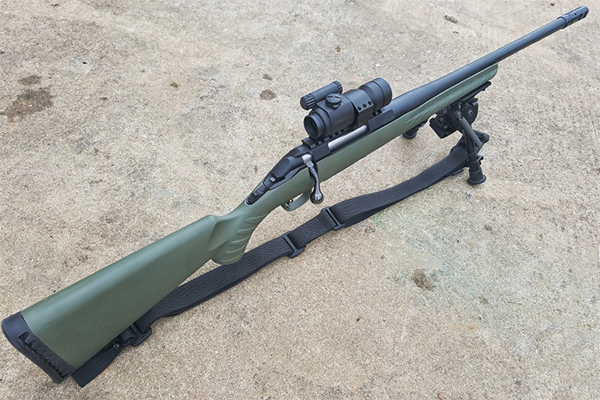
Last Updated on
By Kip Staton
I didn’t set out to build a scout rifle. But when a family member told me we may have a chance this fall to shoot hogs on his property, I opened the safe to see what I had to hunt in heavy brush with. Nothing immediately stood out, so parts started getting swapped around… and I eventually had something that looked workable.
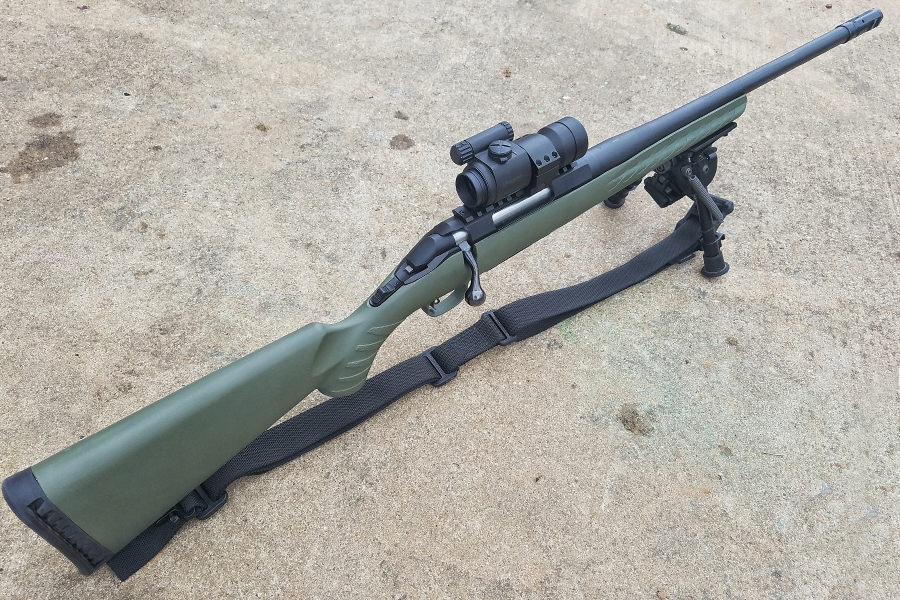
Coincidentally, that thing turned out to fit the criteria of a scout rifle almost exactly.
I don’t want to start a debate about whether or not the scout rifle is still relevant. At the end of the day, the scout concept is just a quick and handy bolt action rifle in .308 Winchester. As long as guns exist, potentially millions of users who don’t even know what a scout rifle is will be using rifles that meet that general description. The scout rifle is valid.
That said, the scout in its purest form definitely has a cult following. Among enthusiasts, it’s fun to build and use rifles that precisely meet Jeff Cooper’s vision of a general purpose rifle. Like any niche product, there are militant purists who refuse to label things “scout rifle” unless they match up to Cooper’s “parts list” exactly. Your overall length is off by a quarter inch? No scout rifle for you!
I think this is missing the point of the scout rifle, to an extent. Obviously, there has to be a defined standard for a rifle meeting a specific concept. Not everything is a scout rifle. But there is a very small degree of leeway allowed, I believe.
Why I Chose Ruger American Predator
As I stated, my creation of a scout rifle was unintentional. I didn’t set out to build one, but I sure ended up with one. When choosing a rifle from among my meager collection to hunt land covered with a mixture of dense brush and open fields, I realized that I definitely wanted to use my .308 Winchester, a Ruger American Predator (full Ruger American Predator review here).
The gun is pretty handy, and the .308 Winchester needs no introduction. While 5.56 NATO is adequate on hogs with the right bullet selection, my experience has shown that the .308 Winchester is generally better at putting things down, and is a little more forgiving with shot placement. With quick shots almost a certainty, I wanted all the margin for error possible.
Cooper called for “any bolt action with a smooth action,” and the Ruger American definitely fits the bill. It also feeds from four-round detachable box magazines. As it turns out, these magazines are not the most reliable system ever designed.
Use over time has shown that occasionally, the third round will nose dive and jam up, which takes a minute to untangle. Until Magpul releases their Hunter stock (which uses AICS mags) for the American, there’s no good fix for this. However, the mags usually work.
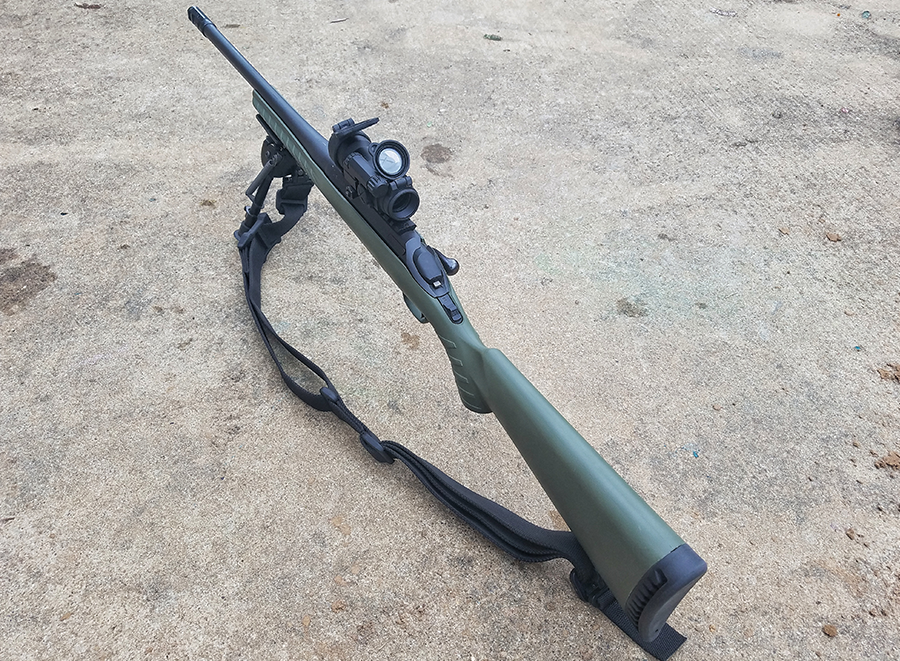
Ruger designed the American with a full-diameter bolt, which slides nicely within the receiver. This bolt features three lugs, for a very low lift. The overall action is very quick, compact, and smooth. I do sometimes wish the bolt handle were a bit larger from the factory. Aftermarket drop-in parts are available to fix this, so I don’t really have an excuse for complaining.
The tang-mounted safety snaps quickly on and off with an audible sound and distinct feel, and a sturdy receiver mounted bolt stop keeps the bolt in place until it’s time for maintenance. Small, but welcome details.
My Predator easily meets and exceeds Cooper’s traditional 2 MOA accuracy requirement for scout rifles, but that isn’t unusual at all for any rifle these days. If your rifle won’t meet scout standards with good ammo, something is wrong. The adjustable Ruger Marksman trigger is tuned down to three pounds on my rifle, which is also within the original scout spec. This helps quite a bit when attempting to shoot small groups.
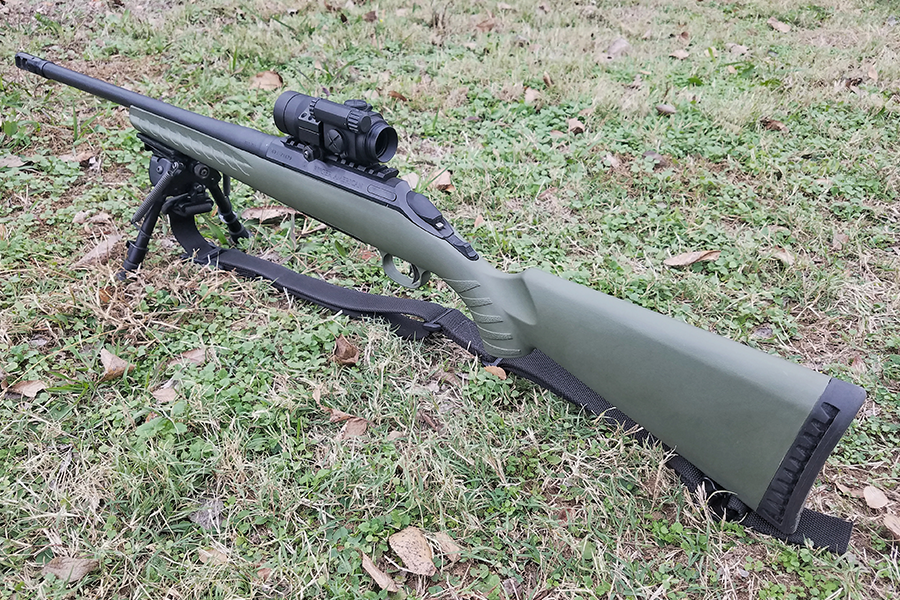
The fact that the action and layout of this little .308 matches up closely with Cooper’s vision of the ideal general purpose rifle simply reinforces my belief that it’s one of the better available bolt guns today. And the green stock blends into the woods remarkably well.
Sling Choice
I use Magpul MS1 slings for both my bolt action and AR-15 rifles, and like to set them up with the adjustable slider end attached to the front swivel. This lets me use the sling as a traditional cuff-style shooting sling, by slipping my arm through the opening behind the slider and tightening it against my arm.
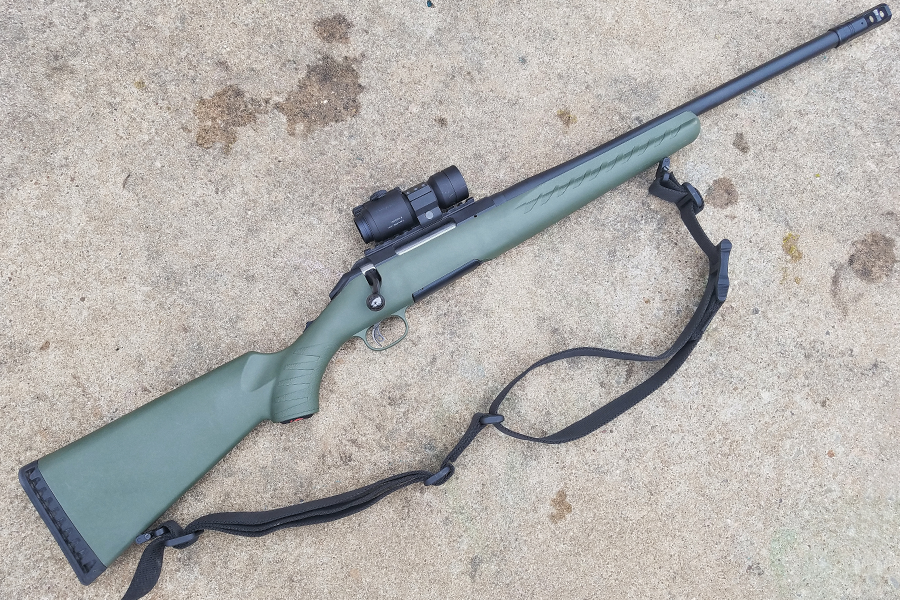
I simply set the front length of the sling to be tight when used as a cuff, then fasten the back end to the rear swivel with a length appropriate for a supported hasty sling when the cuff isn’t being used. Tripling the webbing back through on the butt end provides a nice bit of padding for muzzle-down carry. This configuration gives me a versatile sling setup that can be used as a hasty sling, cuff shooting sling, and carry strap.
As a rifle sling, the Magpul MS1 is affordable and extremely high quality. I haven’t found a downside yet. It’s attached with an inexpensive set of standard sling hardware from Allen. Much ado is made about the “ching slings” on traditional scout rifles, but a standard hasty sling was also acceptable to Cooper.
Ruger American Predator Overall Length and Weight
My Ruger American Predator doesn’t quite make “scout length,” but that’s only because I have a Surefire PROCOMP installed. With the muzzle brake in place, the gun measures 40.25”, less than an inch longer than what Cooper originally intended. Close enough, especially since I’m above average height.
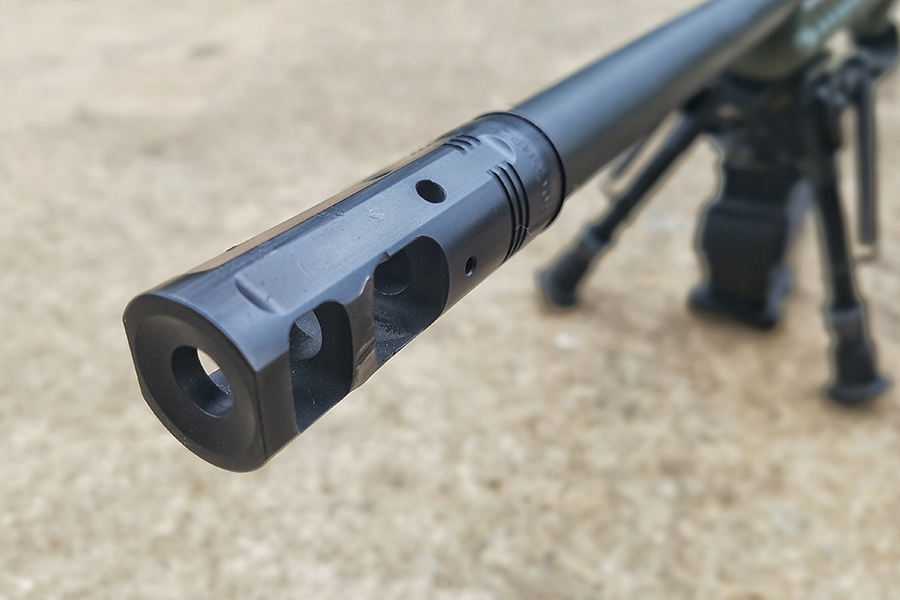
It’s a lightweight .308 rifle, and honestly isn’t that much fun to shoot without the brake. The minimal added length is more than made up for in a better handling and easier-to-shoot rifle, in my opinion. Yes, it’s ridiculously loud compared to shooting it with no brake. But that’s fine with me, since I’m never out without a set of electronic ear protection.
Loaded weight with the optic and sling comes out to 7 pounds, 7 ounces. This is within the weight spec originally specified by Cooper, which is actually pretty difficult to achieve. It’s a quick, light package.
Aimpoint for a Scout Rifle?
Most people immediately imagine a forward mounted, low-powered “scout scope” when the scout rifle concept is brought up. However, Col. Cooper never originally made it a hard and fast rule. In his view, a set of rugged ghost ring sights was also a suitable solution. Ideally, the original scout carbine would have both optics and backup irons.
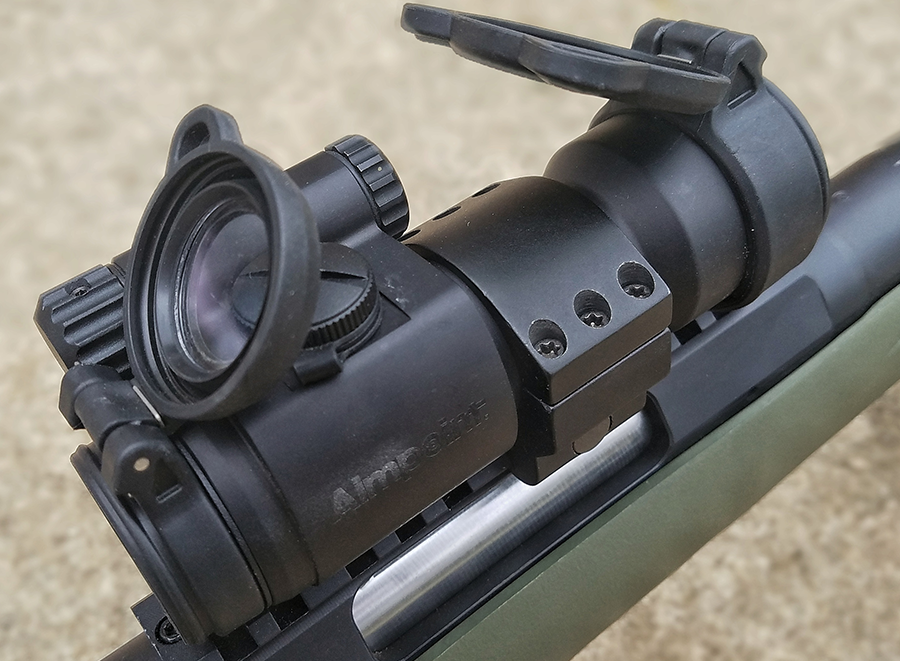
Sadly, it’s harder and harder to find factory bolt guns with iron sights these days, let alone a good set of ghost rings. And for mass produced hunting guns like the Ruger American Predator, forget trying to find a non-gunsmith solution for setting up a front iron sight.
However, let’s think about the reasoning behind ghost ring sights for a moment: They are ultimately designed to be quick to use. Simply look through the ring of the rear sight, put your front sight on the target, and press the trigger. Your eye automatically centers the front post, for a quick firing solution.
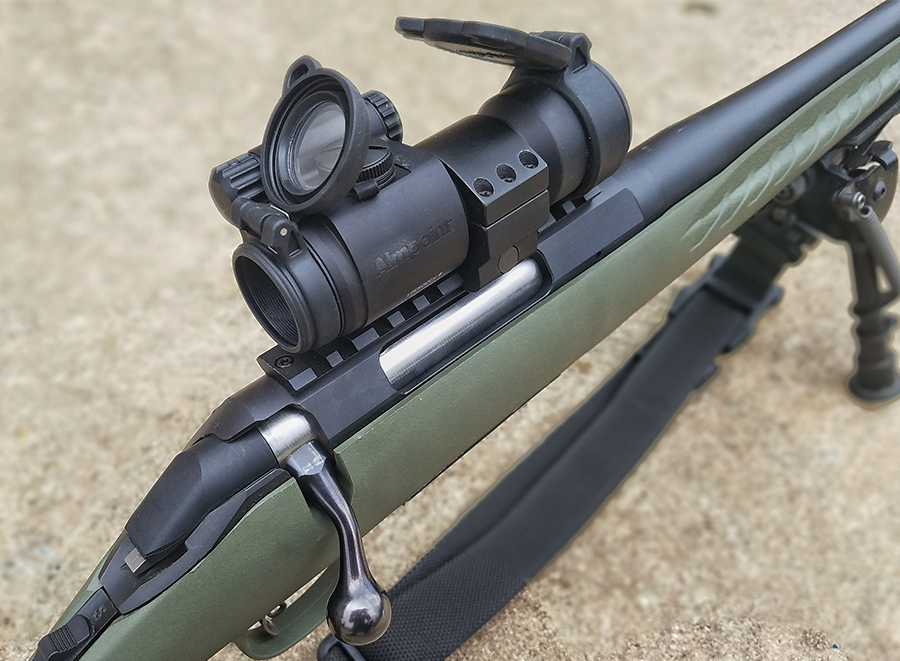
Well, an Aimpoint accomplishes exactly the same thing, only better. I would even argue that an Aimpoint is superior in all ways to a set of iron sights, especially in terms of reliability. My Aimpoint PRO is a tank, and makes a lot of sense on this rifle.
Ghost ring sights are usually pretty rugged, but there’s no contest here. Small, metal fiddly bits vs. an Aimpoint? Yeah, I’m betting on the Aimpoint. Batteries dying aren’t a concern, of course. I don’t even turn off my PRO, since the battery life is measured in years.
With quality optics, it’s my opinion that backup sights are just not really needed in this day and age. The only bad thing that can happen with the Aimpoint is that the battery dies, and the chances of that happening are once every four years, at the worst. Spare batteries are easy to keep on hand, even in the field.
Furthermore, no iron sights of the kind typically used on scout rifles are going to come close to the 2 MOA-subtended dot for ease of use at distance. Most front iron sights on factory scout rifles are extremely fat, and could obscure far away targets.
Can the Aimpoint lens fog with temperature changes, while iron sights remain unaffected? Sure. But there are numerous inexpensive lens cleaning/treatment products that prevent fogging.
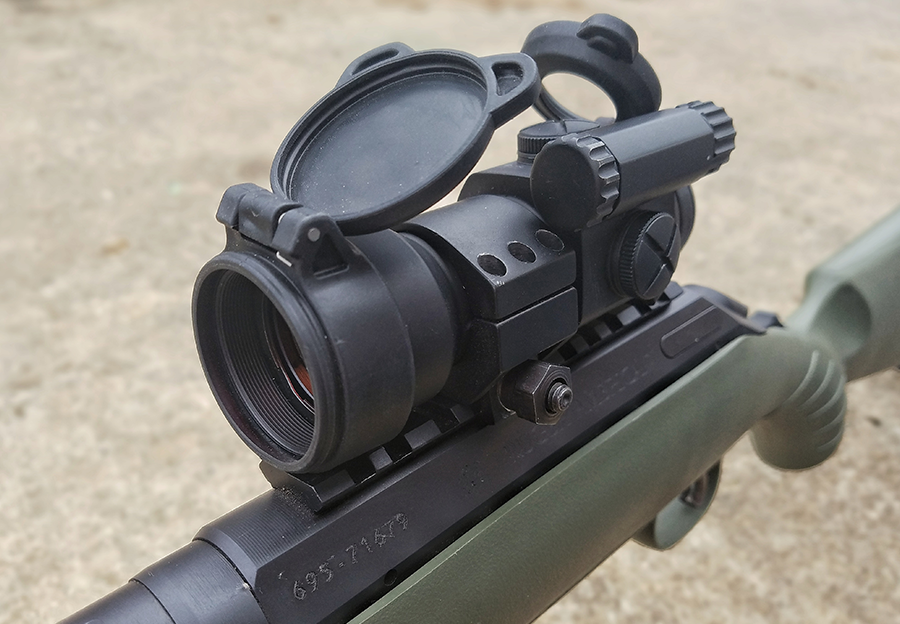
As another bonus, the Aimpoint is super compact. It nestles nicely on the top of the rifle, and is actually shorter than the receiver mounting rail it sits on. This optic choice really allows the rifle to point as well as it possibly can. It doesn’t change the balance of the rifle negatively, and only adds a few ounces. I dropped it into my workhorse Burris scope ring, and torqued everything down with a Wheeler FAT wrench.
This idea of a red dot on a bolt action rifle is actually not a new one. For driven boar hunts in Europe, a straight-pull bolt gun with an Aimpoint up top is pretty standard. Granted, their rifles are almost always a little nicer than my sub-$400 Ruger, and feature a straight pull action, but the concept is the same.
Putting a red dot on a bolt gun isn’t really a consideration for most stateside shooters. Looking through a 3-9×42 rifle scope from a tree stand is more in line with what East Texas hunters in my area do when deer season rolls around. Most hunters I know believe that they need that magnification to make a 70 yard shot. I’m not judging them, just pointing out some differences in technique and gear.
A Word on Zero Distance
I usually have a precision-type optic on my Ruger Predator, either for a review or my own personal use. The little gun is just so accurate, it almost seems a shame not to take advantage of its capabilities.
That said, I’m very used to dialing or holding over with the reticle as the target gets further away. This normally means a 100 meter zero. Obviously, dialing turrets is not going to be practical with the Aimpoint, so I needed to find a zero distance that would be good enough for close range shooting, yet versatile enough to take advantage of the .308 ballistics.
After consulting my Kestrel ballistics calculator, I settled on a 50 yard zero distance. The bullet skates a little higher than line-of-sight out to 105 yards, then begins dropping. It doesn’t even rise an entire bullet diameter from 50 to 105 yards, so I consider that to be totally flat.
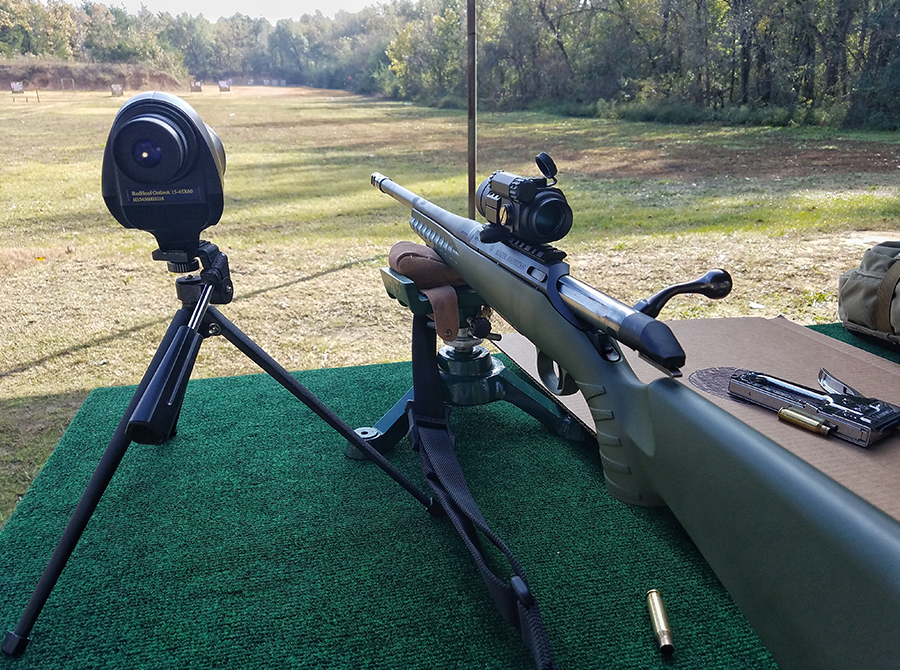
At 200 yards, it’s hitting 2 MOA low. Conveniently, that’s exactly the same size as the dot. In my area, 200 yards is going to be a long, rare shot. So, what we have is a gun that can be used with a dead-on hold on hogs from point-blank out to around 200 yards.
At 400 yards, I simply have to hold four “dots” high. No adjustments are needed, and I don’t even really need to think too hard about where to hold. Perfect!
As a side note, my groups with the Aimpoint were the same size as when shooting with a 10x magnified optic: Right at 1 MOA. I zeroed the rifle with Hornady AMAX Match 168 grain ammunition, a load that’s quickly becoming my go-to for this rifle.
The Accidental Scout Rifle
At first glance, my little gun doesn’t look much like a traditional scout from Cooper’s day. But it checks all the boxes, and at the end of the day is a cost-effective, slim, lightweight way to deliver .308 bullets on target out to around 400 yards, if not more. And I can’t help but think the old colonel would smile at that.
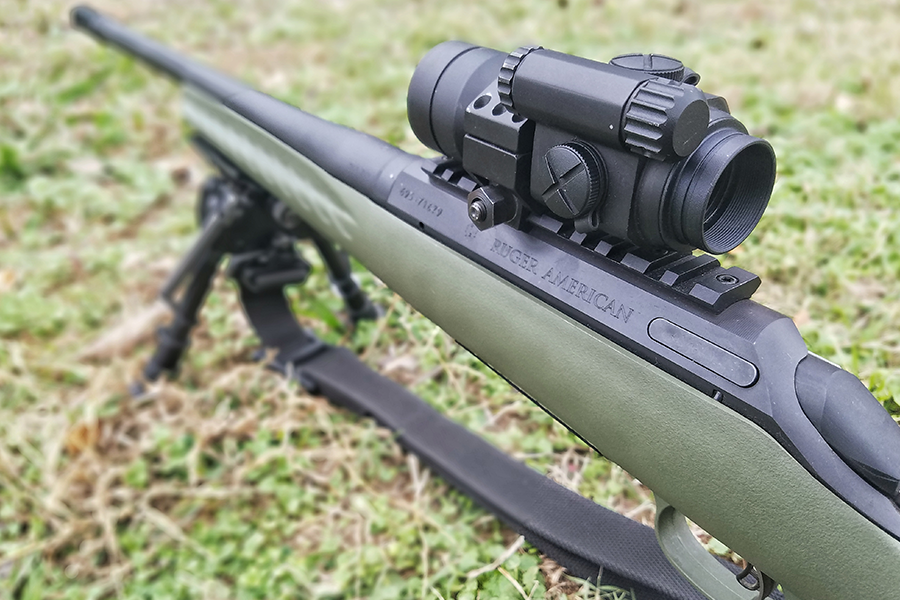




Leave a Reply